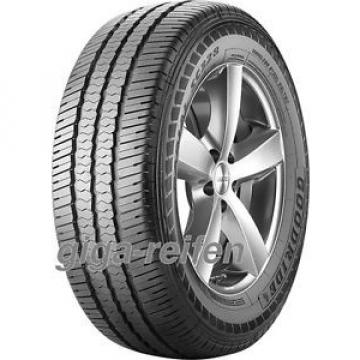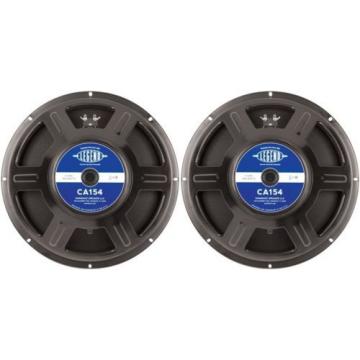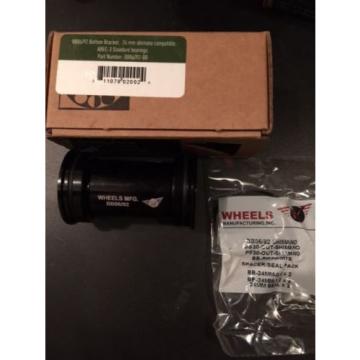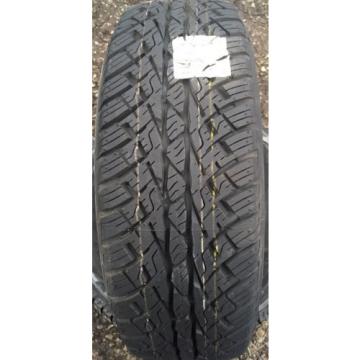Home> Company News> Discovering the Legacy of a 1983 Martin D28 Acoustic Guitar
- AddressShan Dong Province Weifang City
- Factory AddressShan Dong Province Weifang City
- Phone(Working Time)86-13305315989
- Phone(Nonworking Time)86-13305315989
Discovering the Legacy of a 1983 Martin D28 Acoustic Guitar
2023-05-05 13:56:27The Martin D28 guitar series has been an iconic part of American music history since its introduction in 1931. The series has seen many changes and modifications over the years, with each model offering unique features and tonal qualities that appeal to guitar enthusiasts around the world. The 1983 Martin D28 acoustic guitar is one such model that has captured the hearts of guitar players and collectors alike.
History and Background of the 1983 Martin D28 Acoustic Guitar
The Martin D28 series has been in production since 1931, and it is one of the most popular and highly regarded acoustic guitar models in history. The D28 has been used by countless musicians across many different genres, including folk, country, rock, and blues. In 1983, Martin produced a limited number of D28 guitars that are highly sought after by collectors and players alike.
The 1983 Martin D28 is considered a vintage guitar, and it has a unique place in the history of the Martin D28 series. The guitar was made during a time when Martin was experimenting with different construction methods and materials. The 1983 model is known for its high-quality craftsmanship and exceptional sound quality.
Key Features and Specifications of the 1983 Martin D28 Guitar
The 1983 Martin D28 guitar has many features that set it apart from other guitars in the Martin D28 series. The guitar has a solid spruce top, rosewood back and sides, and an ebony fingerboard. The neck is made from mahogany, and it features a modified V-shape profile that is comfortable to play. The guitar has a 25.4-inch scale length and a nut width of 1 11/16 inches.
The 1983 Martin D28 guitar also features a unique bracing pattern that was used only on a limited number of guitars during this time. The bracing is designed to enhance the guitar's tonal qualities and improve its overall resonance. The guitar also features an adjustable truss rod, which allows players to adjust the neck and achieve the perfect action for their playing style.
Comparison of the 1983 Model to Other Martin D28 Models
The 1983 Martin D28 guitar is often compared to other models in the Martin D28 series, including the D28 Standard, the D28 Authentic 1937, and the D28 Marquis. While each of these guitars shares some similarities, the 1983 model stands out due to its unique bracing pattern and construction methods.
Compared to the D28 Standard, the 1983 model has a different bracing pattern that gives it a slightly different tone. The 1983 model is also considered to be more rare and valuable due to its limited production. The D28 Authentic 1937 is a reissue of the original D28 model from 1937, and it features a slimmer neck profile and an aged finish that gives it a vintage look. The D28 Marquis is a high-end model in the D28 series that features premium materials and a hand-selected top.
In summary, the 1983 Martin D28 acoustic guitar is a unique and highly sought-after model in the Martin D28 series. Its high-quality craftsmanship, unique bracing pattern, and exceptional sound quality make it a favorite among guitar players and collectors around the world.
Construction and Design of the 1983 Martin D28 Guitar
The 1983 Martin D28 acoustic guitar was crafted with the utmost care and attention to detail. Martin's dedication to quality is evident in every aspect of the guitar's construction and design. In this section, we will explore the materials and construction methods used to create the 1983 Martin D28 guitar and compare it to other Martin D28 models.
Materials Used in the 1983 Martin D28 Guitar
The 1983 Martin D28 guitar features a solid spruce top, which is a common feature of many high-end acoustic guitars. The back and sides of the guitar are made from Indian rosewood, which is a dense and hard tonewood that is prized for its tonal qualities. The fingerboard is made from ebony, a durable and smooth tonewood that is known for its bright tone and excellent playing feel.
The neck of the 1983 Martin D28 guitar is made from mahogany, which is a strong and stable tonewood that is commonly used in guitar necks. The neck features a modified V-shape profile that is comfortable to play and provides excellent support for the player's hand.
Construction Methods Used in the 1983 Martin D28 Guitar
The 1983 Martin D28 guitar features a unique bracing pattern that sets it apart from other guitars in the Martin D28 series. The bracing is designed to enhance the guitar's tonal qualities and improve its overall resonance. The bracing is made from Sitka spruce, which is a lightweight and strong tonewood that is commonly used for guitar bracing.
The guitar's body is constructed using Martin's dreadnought shape, which is known for its large size and booming sound. The body of the guitar is made using Martin's X-bracing pattern, which helps to balance the guitar's tone and improve its overall projection. The 1983 model also features a unique diamond volute on the back of the headstock, which adds to its visual appeal and reinforces the neck joint.
Comparison of the 1983 Model to Other Martin D28 Models
Compared to other Martin D28 models, the 1983 model stands out due to its unique bracing pattern and construction methods. For example, the D28 Standard features a scalloped bracing pattern, which gives it a different tone than the 1983 model. The D28 Authentic 1937 features an Adirondack spruce top and bracing pattern that is designed to mimic the sound and feel of the original D28 from 1937.
The D28 Marquis features premium materials, including a Sitka spruce top and Madagascar rosewood back and sides. The Marquis also features Martin's Vintage Tone System, which is a proprietary process that ages the guitar's tonewoods to enhance their tonal qualities.
In summary, the 1983 Martin D28 acoustic guitar is a unique and highly prized model in the Martin D28 series. Its high-quality construction and unique bracing pattern set it apart from other Martin D28 models, and its premium materials and excellent playability make it a favorite among guitar players and collectors.
Sound and Tone of the 1983 Martin D28 Guitar
The sound and tone of the 1983 Martin D28 guitar are a reflection of the guitar's high-quality materials and exceptional construction. The guitar is known for its warm and balanced tone, which makes it a popular choice for a wide range of musical genres. In this section, we will evaluate the sound and tone of the 1983 Martin D28 guitar and compare it to other Martin guitar series and competitors.
Evaluation of the Sound Quality and Tone of the 1983 Martin D28 Guitar
The 1983 Martin D28 guitar produces a warm, rich tone with excellent projection and sustain. The guitar's solid spruce top and Indian rosewood back and sides contribute to its balanced tone, while the unique bracing pattern enhances its overall resonance. The guitar's tone is well-suited for a wide range of playing styles, including fingerpicking, flatpicking, and strumming.
The 1983 model is often described as having a "woody" tone that is both clear and articulate. The guitar's tonal qualities make it an ideal instrument for both recording and live performances. The guitar's resonance and projection make it a popular choice among musicians who need an instrument that can cut through a mix and be heard in a live setting.
Comparison of the Sound and Tone to Other Martin Guitar Series and Competitors
When compared to other Martin guitar series, the 1983 Martin D28 guitar stands out due to its warm and balanced tone. The Martin D18, for example, is known for its bright and clear tone, while the Martin HD-28 features a more powerful and dynamic tone. The Martin D35, on the other hand, produces a darker, more complex tone.
Compared to its competitors, the 1983 Martin D28 guitar is often regarded as one of the finest acoustic guitars ever made. Its warm and balanced tone make it a favorite among guitar players and collectors alike. Competing brands such as Gibson and Taylor offer their own high-quality acoustic guitars, but the 1983 Martin D28 remains a top choice for musicians looking for exceptional sound quality and playability.
Expert Opinions and Reviews of the 1983 Martin D28 Guitar Sound and Tone
Experts and reviewers have praised the sound and tone of the 1983 Martin D28 guitar. In a review for Acoustic Guitar magazine, Teja Gerken wrote, "The guitar had a robust sound that was both warm and articulate, with a strong bass and a sweet midrange." He went on to describe the guitar's tone as "rich and complex," with excellent projection and sustain.
Guitarist and composer Laurence Juber has also praised the sound and tone of the 1983 Martin D28 guitar. In an interview with Guitar Player magazine, Juber said, "It's a great-sounding guitar. It's got a warmth to it that I really like, and it's also very articulate. You can play anything on it, from fingerstyle to flatpicking, and it sounds great."
In summary, the 1983 Martin D28 acoustic guitar produces a warm and balanced tone that is well-suited for a wide range of musical styles. Its unique bracing pattern and high-quality materials contribute to its exceptional sound quality, making it a top choice among guitar players and collectors. Expert reviews and opinions have praised the guitar's rich and complex tone, excellent projection, and sustain.
Playing the 1983 Martin D28 Guitar
The 1983 Martin D28 guitar is not only known for its exceptional sound quality but also for its playability and comfort. The guitar is well-suited for a wide range of playing styles, and its unique design elements contribute to its overall playability. In this section, we will analyze the playability and comfort of the 1983 Martin D28 guitar and compare it to other Martin guitar series and competitors.
In-Depth Analysis of the Playability and Comfort of the 1983 Martin D28 Guitar
The 1983 Martin D28 guitar features a modified V-shape neck profile that is comfortable to play and provides excellent support for the player's hand. The neck is also designed to be relatively slim, which makes it easier for players to navigate the fretboard. The guitar's ebony fingerboard is smooth and responsive, making it easy to play complex chord shapes and single-note lines.
The guitar's large dreadnought body shape is designed to enhance its tonal qualities and provide excellent projection. While the guitar may be larger than some other acoustic guitar models, its balanced weight distribution and comfortable body shape make it easy to hold and play for extended periods.
Comparison to Other Martin Guitar Series and Competitors in Terms of Playability
Compared to other Martin guitar series, the 1983 Martin D28 guitar is known for its excellent playability and comfort. The Martin D18, for example, features a similar neck profile but has a slimmer body shape that may be less comfortable for some players. The Martin HD-28 features a larger body shape that is similar to the 1983 D28 but has a different neck profile that may be less comfortable for some players.
Compared to its competitors, the 1983 Martin D28 guitar is often regarded as one of the most playable and comfortable acoustic guitars available. Competing brands such as Gibson and Taylor offer their own high-quality acoustic guitars, but the 1983 Martin D28 is known for its exceptional playability and comfort.
User Reviews and Opinions on the Playability of the 1983 Martin D28 Guitar
User reviews and opinions on the playability of the 1983 Martin D28 guitar are overwhelmingly positive. Guitar players from all over the world have praised the guitar's comfortable neck profile and smooth fingerboard. Many players also appreciate the guitar's balanced weight distribution, which makes it easy to play for extended periods.
In summary, the 1983 Martin D28 acoustic guitar is known for its exceptional playability and comfort. Its modified V-shape neck profile, slim body shape, and smooth fingerboard make it easy to play complex chord shapes and single-note lines. Compared to other Martin guitar series and competitors, the 1983 Martin D28 stands out as one of the most playable and comfortable acoustic guitars available. User reviews and opinions have praised the guitar's comfortable neck profile, smooth fingerboard, and balanced weight distribution.
The Value and Rarity of the 1983 Martin D28 Guitar
The 1983 Martin D28 guitar is not only prized for its exceptional sound quality and playability, but also for its value and rarity. The guitar is a highly sought-after model among guitar collectors, and its market value has increased significantly over time. In this section, we will discuss the value and rarity of the 1983 Martin D28 guitar and compare it to other rare and valuable Martin guitar models.
Discussion of the Value and Rarity of the 1983 Martin D28 Guitar
The value of the 1983 Martin D28 guitar has increased significantly over time, due in part to its exceptional sound quality and playability, as well as its relative rarity. While Martin produced many D28 guitars in the 1980s, the 1983 model is considered to be one of the most desirable due to its unique bracing pattern and high-quality materials.
As of 2023, the market value of a 1983 Martin D28 guitar in excellent condition ranges from $7,000 to $10,000 or more, depending on factors such as the guitar's condition, originality, and provenance. Some well-preserved examples of the 1983 Martin D28 have sold for much higher prices at auction.
Analysis of the Guitar's Market Value and How It Has Changed Over Time
The market value of the 1983 Martin D28 guitar has increased significantly over time, reflecting the guitar's exceptional quality and relative rarity. In the early 2000s, the market value of a 1983 Martin D28 guitar in excellent condition ranged from $3,000 to $5,000. By the mid-2010s, the market value had increased to $5,000 to $7,000, and by 2023, the market value had reached $7,000 to $10,000 or more.
Factors that can affect the market value of a 1983 Martin D28 guitar include the guitar's condition, originality, and provenance. A guitar that is in excellent original condition and has been well-preserved will typically command a higher market value than a guitar that has been heavily modified or has significant wear and tear.
Comparison of the 1983 Model to Other Rare and Valuable Martin Guitar Models
The 1983 Martin D28 guitar is just one of many rare and valuable Martin guitar models. Other examples include the 1930s Martin D-45, which is one of the most valuable acoustic guitars ever made, with examples selling for over $1 million at auction. The Martin D-28GE Golden Era is another highly sought-after model that is prized for its exceptional sound quality and construction.
Compared to these models, the 1983 Martin D28 guitar is relatively affordable, but it is still a highly prized and valuable instrument. The guitar's unique bracing pattern and high-quality materials make it a favorite among guitar collectors, and its market value is expected to continue to increase over time.
In summary, the 1983 Martin D28 acoustic guitar is a highly prized and valuable instrument. Its exceptional sound quality and playability, as well as its relative rarity, have contributed to its market value, which has increased significantly over time. While it may not be as rare or valuable as some other Martin guitar models, the 1983 Martin D28 is still a highly desirable instrument that is coveted by guitar players and collectors alike.

Maintaining and Caring for the 1983 Martin D28 Guitar
Maintaining and caring for a vintage Martin D28 guitar is essential to ensure its longevity and preserve its exceptional sound quality and value. The 1983 Martin D28 guitar is a high-quality instrument that requires proper care and maintenance to keep it in top condition. In this section, we will provide advice on maintaining and caring for a vintage Martin D28 guitar, including best practices for cleaning, storing, and maintaining the guitar, as well as common issues and how to address them.
Advice on Maintaining and Caring for a Vintage Martin D28 Guitar
To keep a vintage Martin D28 guitar in top condition, it is important to follow these best practices for cleaning, storing, and maintaining the guitar:
-
Keep the guitar clean: Regularly clean the guitar with a soft, dry cloth to remove dust and dirt. Avoid using harsh chemicals or solvents that can damage the guitar's finish.
-
Store the guitar properly: Store the guitar in a cool, dry place away from direct sunlight and humidity. Use a guitar case or gig bag to protect the guitar from scratches and other damage.
-
Maintain the guitar's humidity level: Maintain the guitar's humidity level between 45-55% to prevent the wood from drying out or warping. Use a humidifier or dehumidifier to maintain the guitar's humidity level.
-
Change the guitar's strings regularly: Change the guitar's strings every few months or as needed to ensure optimal sound quality and playability.
-
Have the guitar professionally serviced: Regularly take the guitar to a professional luthier for maintenance and repairs, including neck adjustments, fretwork, and other repairs.
Common Issues and How to Address Them
Even with proper care and maintenance, vintage Martin D28 guitars may experience common issues such as:
-
Cracks in the wood: Cracks in the wood can occur due to changes in temperature or humidity. If the guitar develops cracks, it is important to have them repaired by a professional luthier to prevent further damage.
-
Fret wear: Over time, the guitar's frets may wear down or become uneven, which can affect the guitar's playability. Have the guitar's frets professionally replaced or leveled to ensure optimal playability.
-
Bridge and saddle issues: The guitar's bridge and saddle may become loose or damaged over time. Have the guitar's bridge and saddle professionally repaired or replaced as needed to ensure optimal sound quality.
In summary, maintaining and caring for a vintage Martin D28 guitar is essential to preserve its exceptional sound quality and value. Follow best practices for cleaning, storing, and maintaining the guitar, and have it professionally serviced as needed to prevent and address common issues such as cracks, fret wear, and bridge and saddle issues. With proper care and maintenance, a vintage Martin D28 guitar can provide exceptional sound quality and playability for many years to come.
Buying a 1983 Martin D28 Guitar
Buying a vintage Martin D28 guitar can be a significant investment, and it is important to consider several factors before making a purchase. In this section, we will provide tips for purchasing a vintage Martin D28 guitar, including where to find them, factors to consider when buying a 1983 Martin D28 guitar, and recommendations for the best places to purchase a 1983 Martin D28 guitar.
Tips for Purchasing a Vintage Martin D28 Guitar, Including Where to Find Them
When considering purchasing a vintage Martin D28 guitar, here are some tips to keep in mind:
-
Research the guitar: Before making a purchase, research the specific model and year of the guitar to understand its unique features and market value.
-
Check the guitar's condition: If possible, inspect the guitar in person to check for any signs of damage or wear and tear. Look for any cracks, scratches, or other issues that may affect the guitar's playability or value.
-
Consider the guitar's provenance: A guitar with a well-documented history and provenance may be worth more than a guitar with an unknown history.
-
Be prepared to negotiate: Vintage guitar prices can be highly variable, and it is important to be prepared to negotiate the price with the seller.
-
Consider purchasing from a reputable dealer: Purchasing from a reputable dealer can offer peace of mind and may come with additional protections such as warranties or return policies.
Factors to Consider When Buying a 1983 Martin D28 Guitar, Such as Price, Condition, and Authenticity
When considering purchasing a 1983 Martin D28 guitar, here are some factors to consider:
-
Price: The market value of a 1983 Martin D28 guitar can vary widely depending on factors such as the guitar's condition, originality, and provenance. Be prepared to spend several thousand dollars for a guitar in excellent condition.
-
Condition: The guitar's condition is a crucial factor to consider when purchasing a vintage Martin D28 guitar. Look for a guitar that is in excellent original condition, with minimal signs of wear and tear.
-
Authenticity: It is important to verify the guitar's authenticity before making a purchase. Look for serial numbers and other identifying marks, and consult with experts to ensure that the guitar is genuine.
Recommendations for the Best Places to Purchase a 1983 Martin D28 Guitar
Here are some recommended places to purchase a 1983 Martin D28 guitar:
-
Reputable dealers: Purchase from a reputable dealer with a track record of selling high-quality vintage instruments.
-
Online marketplaces: Look for vintage Martin D28 guitars on reputable online marketplaces such as Reverb or eBay.
-
Private sellers: Purchase from private sellers with a well-documented history and provenance.
In summary, purchasing a 1983 Martin D28 guitar can be a significant investment, and it is important to consider factors such as price, condition, and authenticity before making a purchase. Research the guitar and its market value, inspect the guitar in person if possible, and consider purchasing from a reputable dealer or online marketplace. With proper research and due diligence, you can find a high-quality vintage Martin D28 guitar that will provide exceptional sound quality and value for years to come.
Alternative Guitars to the 1983 Martin D28
While the 1983 Martin D28 guitar is an exceptional instrument, there are many alternative guitar models for those interested in the Martin D28 series. In this section, we will discuss some alternative guitar models and compare them to the 1983 Martin D28 in terms of specifications, materials, and price.
Discussion of Alternative Guitar Models for those Interested in the Martin D28 Series
Here are some alternative guitar models for those interested in the Martin D28 series:
-
Martin HD-28: The Martin HD-28 is a popular alternative to the Martin D28. It is similar in design and construction, with the same body shape and bracing pattern. The HD-28 is also made with high-quality materials such as a Sitka spruce top and Indian rosewood back and sides. However, the HD-28 features herringbone trim and a diamond volute, which give it a slightly different look than the D28.
-
Martin D-35: The Martin D-35 is another alternative to the Martin D28. Like the D28, the D-35 features a dreadnought body shape and solid spruce top, but it has a three-piece back made of Indian rosewood. The D-35 also features a unique, triangular bridge and white binding on the top and back.
-
Taylor 814ce: The Taylor 814ce is a popular alternative to the Martin D28. It features a Grand Auditorium body shape and a solid Sitka spruce top with Indian rosewood back and sides. The 814ce also features Taylor's Expression System 2 electronics, which offer exceptional sound quality when amplified.
Comparison of Alternative Guitar Models to the 1983 Martin D28 in Terms of Specifications, Materials, and Price
Compared to the 1983 Martin D28, alternative guitar models such as the Martin HD-28, Martin D-35, and Taylor 814ce offer different specifications, materials, and price points. Here is a comparison:
-
Martin HD-28: The Martin HD-28 is similar in design and construction to the Martin D28, with the same body shape and bracing pattern. The HD-28 also features high-quality materials such as a Sitka spruce top and Indian rosewood back and sides. However, the HD-28 is slightly more expensive than the D28, with a market value of around $3,000 to $4,000.
-
Martin D-35: The Martin D-35 is another alternative to the Martin D28, with a similar body shape and solid spruce top. However, the D-35 features a three-piece back made of Indian rosewood and a unique triangular bridge. The D-35 is slightly less expensive than the D28, with a market value of around $2,000 to $3,000.
-
Taylor 814ce: The Taylor 814ce is a popular alternative to the Martin D28, with a Grand Auditorium body shape and solid Sitka spruce top. The 814ce also features Indian rosewood back and sides and Taylor's Expression System 2 electronics. The 814ce is slightly more expensive than the D28, with a market value of around $3,000 to $4,000.

In summary, while the 1983 Martin D28 guitar is an exceptional instrument, there are many alternative guitar models for those interested in the Martin D28 series. Alternative models such as the Martin HD-28, Martin D-35, and Taylor 814ce offer different specifications, materials, and price points, allowing players to find a guitar that fits their specific needs and preferences.
 Eminence Naseberry Treatment Cream 60ml
Eminence Naseberry Treatment Cream 60ml Sommerreifen Goodride SC328 Radial 225/65 R16C 112/110R 8PR BSW
Sommerreifen Goodride SC328 Radial 225/65 R16C 112/110R 8PR BSW Eminence Legend CA154 Legend Series 15" 300-Watt Replac... (2-pack) Value Bundle
Eminence Legend CA154 Legend Series 15" 300-Watt Replac... (2-pack) Value Bundle New: Qty: WHEELS MANUFACTURING PRESSFIT BB86/92 RADIAL BEARING BLACK SHIMANO
New: Qty: WHEELS MANUFACTURING PRESSFIT BB86/92 RADIAL BEARING BLACK SHIMANO 1X 235/60/16 BRAND NEW TYRE TOYO RADIAL SUMMER M+s TASU
1X 235/60/16 BRAND NEW TYRE TOYO RADIAL SUMMER M+s TASU
Top Products
| Martin HD35 |
